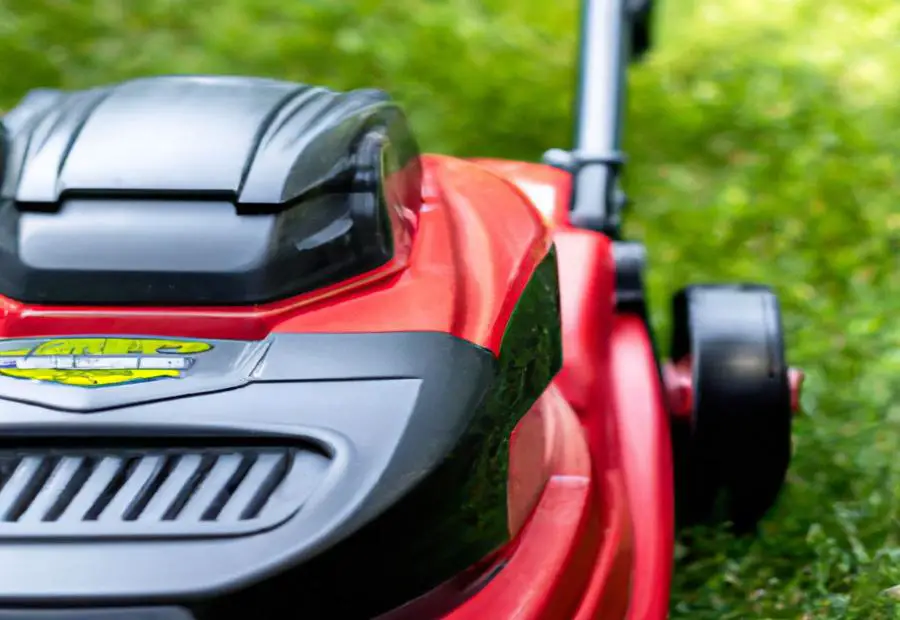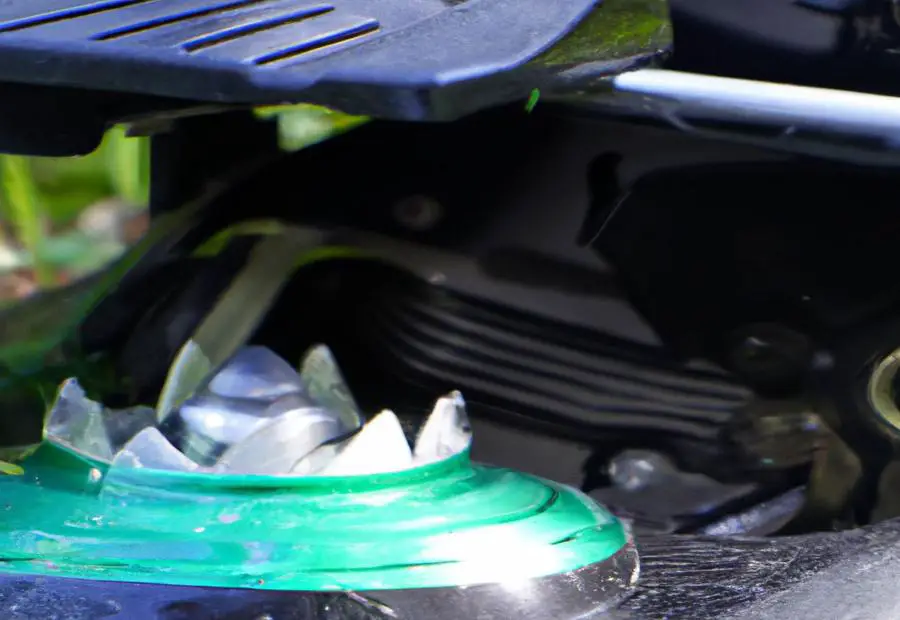GardenerHeaven.com is reader-supported. When you buy through links on our site, we may earn an affiliate commission.
.jpg)

Photo Credits: Gardenerheaven.Com by Wayne Harris
Discover the intricate world of lawn mower ignition problems and their solutions. Explore the common issues faced by lawn mowers, find a comprehensive troubleshooting guide, and unlock expert solutions to tackle these ignition problems head-on. Get ready to revive your lawn mower’s spark and ensure a smooth and efficient mowing experience.
Common Ignition Problems in Lawn Mowers
Regular maintenance is key to addressing common ignition problems in lawn mowers. This involves routine checks of spark plugs, ignition coils, air filters, fuel systems and electrical wiring connections. By following a maintenance schedule and dealing with issues quickly, users can reduce ignition problems.
For best results, users should use high-quality gasoline and oil. Low-quality fuel or wrong oil ratios can cause ignition issues. It is wise to check the manufacturer’s guidelines for the right type and ratio of fuel and oil.
A pro tip: If your lawn mower has ongoing ignition problems, even after maintenance, consult a professional technician. They can detect underlying issues and fix the ignition problems.
Troubleshooting Guide
A troubleshooting guide is a handy tool for identifying and solving typical ignition problems with lawn mowers. Here are some steps to follow:
- Check Fuel Supply: Make sure the mower has enough fuel and it’s running to the engine.
- Examine Spark Plug: Look for signs of wear or damage. Clean or change if needed.
- Inspect Ignition Coil: See if there’s any visible damage. It may need to be swapped out.
- Test Kill Switch: Ensure it works correctly and isn’t blocking spark generation.
- Clean/Replace Carburetor: If it’s dirty or blocked, clean or replace to restore ignition.
- Refer to User Manual: Read the manual for specific steps and guidance for your mower model.
Maintaining the lawn mower is also essential to avoid ignition issues. Do this by swapping air filters, checking oil levels, and making sure connections are tight.
By following the guide and doing regular maintenance tasks, users can fix ignition problems and keep their mowers running throughout the season.
Solutions for Ignition Problems
Lawn mower ignition problems? No problem! Implement effective solutions.
- Inspect spark plug for damage or wear. Replace if needed.
- Check the ignition coil to make sure it is connected securely. Tighten any loose connections.
- Clean spark plug electrode with a wire brush or spark plug cleaner to remove deposits or carbon.
- Examine flywheel key. Replace if damaged or sheared to restore proper ignition timing.
- If all else fails, refer to manufacturer’s manual or contact a technician.
Clean and maintain the ignition system regularly. This includes cleaning the air filter, fuel filter, and using high-quality gasoline and oil.
Regular maintenance = smoothly running lawn mower. (Source: Reference Data). So, get to it and keep your lawn mower running!
Importance of Regular Maintenance

Photo Credits: Gardenerheaven.Com by Jonathan Hernandez
Regular maintenance is a must for keeping your lawn mower in good condition and making sure it lasts. Ignoring it can cause ignition problems, like no spark. A worn-out or damaged ignition coil can be the source of the problem. So, checking and replacing the coil is important to prevent this and keep the mower running.
The spark plug and air filter also need regular maintenance. The spark plug can get worn out and stop sparking. Inspecting and cleaning/replacing it regularly will help it work properly. The air filter needs to be clean too. If it’s dirty or clogged, the engine won’t get enough air, causing spark issues. Keeping it clean is key.
The fuel system should also be part of the maintenance routine. Dirt and debris gathering in the fuel tank can cause blockages in the fuel lines or carburetor. This means less fuel gets to the combustion chamber, resulting in no spark. Cleaning the fuel system will sort this out. Also, use clean and fresh fuel to avoid affecting the ignition system.
Maintaining your lawn mower well stops ignition problems and lengthens its life. Follow a regular maintenance schedule and address any issues quickly. Check the manufacturer’s guidelines for advice on maintenance tasks and intervals.
Pro Tip: Keep a maintenance log for your lawn mower. Record the dates of inspection, cleaning, and component replacement. This will help you stay organized and make sure all maintenance tasks are done on time.
Conclusion

Photo Credits: Gardenerheaven.Com by Thomas Jones
All in all, fixing spark issues in lawn mowers needs a methodical approach. By following the tips provided in the reference data, like inspecting the spark plug, ignition coil, security features, and electrical links, people can work out and fix regular problems resulting in a sparkless ignition system. Looking after the lawn mower ignition system through regular maintenance and quick repairs is the way to go.
Some Facts About “Lawn Mower No Spark? Troubleshooting Guide and Solutions for Ignition Problems!”:
- ✅ The ignition system is responsible for starting a small engine by producing a spark in the combustion chamber. (Reference: Team Research)
- ✅ There are two types of ignition systems for small engines: solid-state systems and breaker point systems. (Reference: Team Research)
- ✅ The easiest thing to check when troubleshooting ignition system problems is the coil. (Reference: Team Research)
- ✅ When replacing ignition coils or armatures, it is important to set the armature at the proper distance from the flywheel. (Reference: Team Research)
- ✅ Ignition module failure is often caused by heat due to improper wiring of the ground wire to battery voltage. (Reference: Team Research)
FAQs about Lawn Mower No Spark? Troubleshooting Guide And Solutions For Ignition Problems!
Question 1: How can I tell if my lawn mower ignition coil needs to be replaced?
Answer 1: To test the ignition coil, you can use a spark tester. If a spark jumps the tester gap, the ignition coil is working fine. If there is no spark, the ignition coil may need to be replaced.
Question 2: What are the symptoms of a bad ignition coil on a riding lawn mower?
Answer 2: Some symptoms of a bad ignition coil on a riding lawn mower include hard starting, engine only running when you wiggle the plug wire, and poor performance.
Question 3: How do I replace an ignition coil on a lawn mower?
Answer 3: To replace an ignition coil on a lawn mower, you need to remove the old coil and attach the new coil using mounting screws. The armature gap should be set at the proper distance from the flywheel as specified in the engine repair manual.
Question 4: What can cause a lawn mower to start but then die?
Answer 4: A lawn mower starting but then dying can be caused by issues such as a clogged carburetor bowl, outdated gasoline, draining excess oil, or a faulty ignition coil. These problems can affect the fuel and spark delivery to the engine.
Question 5: What should I do if my lawn mower overheats and shuts down?
Answer 5: If your lawn mower overheats and shuts down, it could be a sign of a faulty ignition coil. Other possible causes include a clogged grass deck or an issue with the cutting height. Adjusting the cutting height and changing the lawn mower coil might solve the problem.
Question 6: How can I test the ignition coil on my lawn mower?
Answer 6: To test the ignition coil on your lawn mower, you can use a spark tester. Connect the tester to the spark plug lead and pull the starter rope. If the tester sparks, the ignition coil is functioning properly. If there is no spark, further testing or replacement may be necessary.



